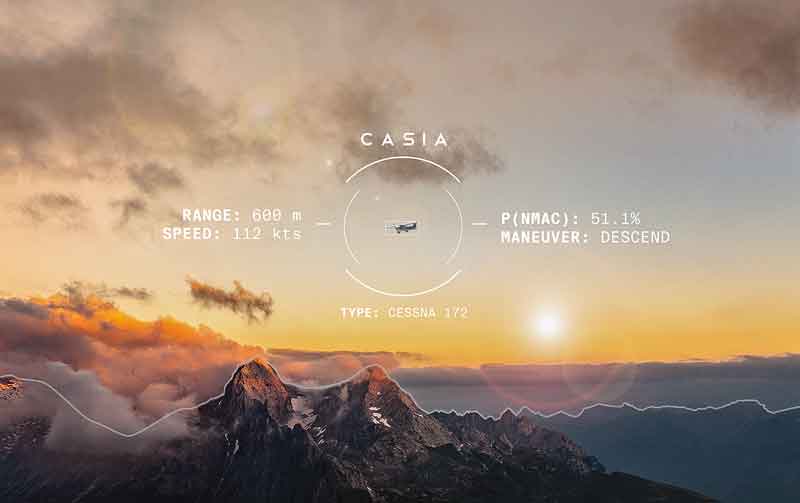
Iris Automation has officially launched Casia, the first commercially available computer vision detect-and-avoid solution to enable Beyond Visual Line of Sight (BVLOS) operations for autonomous vehicles.
Casia detects other aircraft, and utilizing machine learning to classify them, is capable of making intelligent decisions about potential threats they could pose, and triggers automated maneuvers to avoid collisions.
(Iris Automation’s Collision Avoidance technology enables drones to identify, track, and avoid other aircraft when operating beyond visual line of sight (BVLOS). Courtesy of Iris Automation and YouTube. Posted on May 15, 2018.)
For the first time, the Casia system allows an Unmanned Aircraft System (UAS) to truly understand the aviation environment around it as if a pilot were on board.

Casia is a combination of both hardware and software that’s ultra lightweight, low power and small in size, comprising of sophisticated artificial intelligence algorithms and software, packaged in a self-contained supercomputer that works with a machine vision camera.
“Casia is the critical piece our industry has been dreaming about for years – finally allowing us to use drones to their full commercial potential,” explains Iris Automation CEO Alexander Harmsen.
“By unlocking BVLOS flight with Casia, operators all over the world will be able to use their aircraft in every conceivable scenario.”

The Casia technology has been extensively tested, with 7,000+ real-world test flights and mid-air collision scenarios, flying various manned aircraft against UAS, and over 40,000 encounters in simulation.
Casia also ran a successful early adopter program with more than 30 participating beta customers from five countries.
Iris Automation is working directly with regulators around the world to make drones safer and more accessible, ensuring Casia achieves the highest levels of safety for national airspace use.
(This is a low-altitude airspace simulation within one of Iris’ testing environments near Reno, Nevada. Courtesy of Iris Automation and YouTube. Posted on Feb 27, 2019.)

















